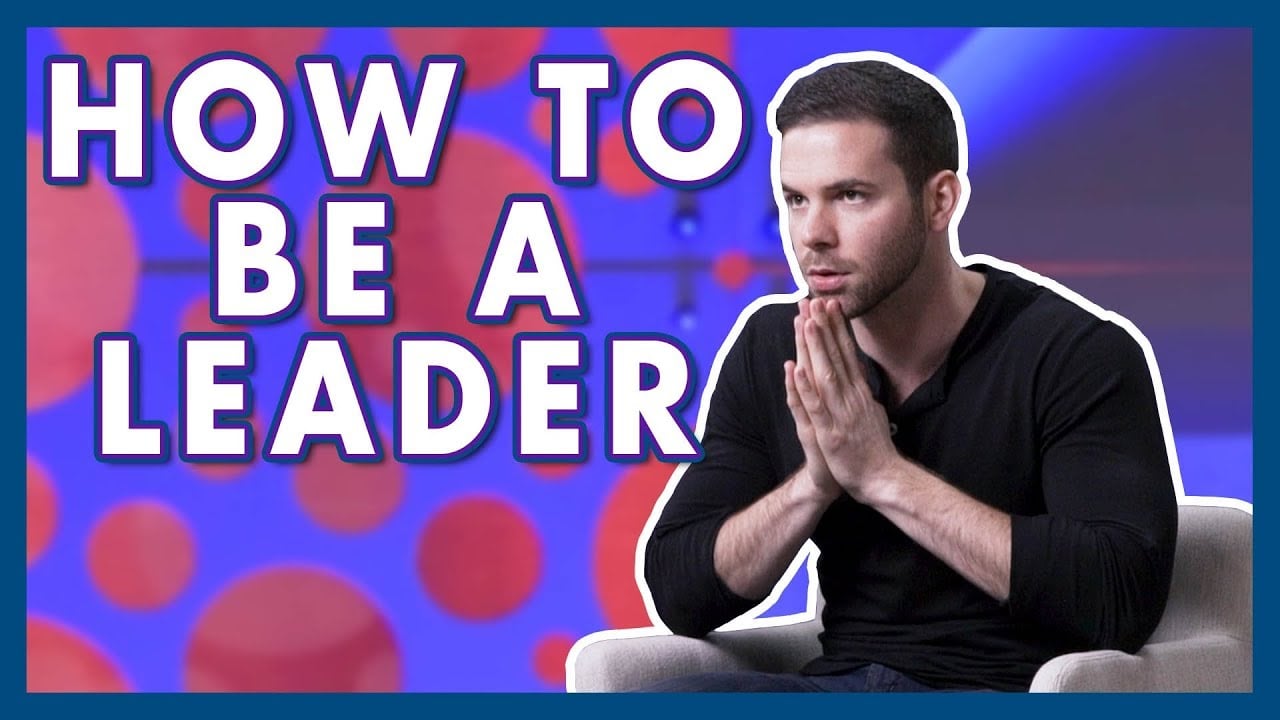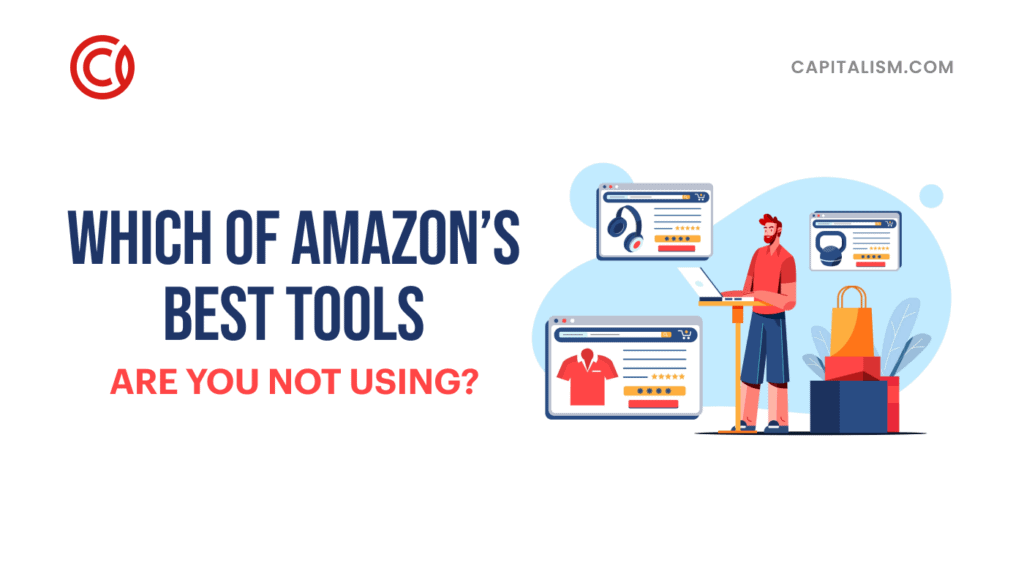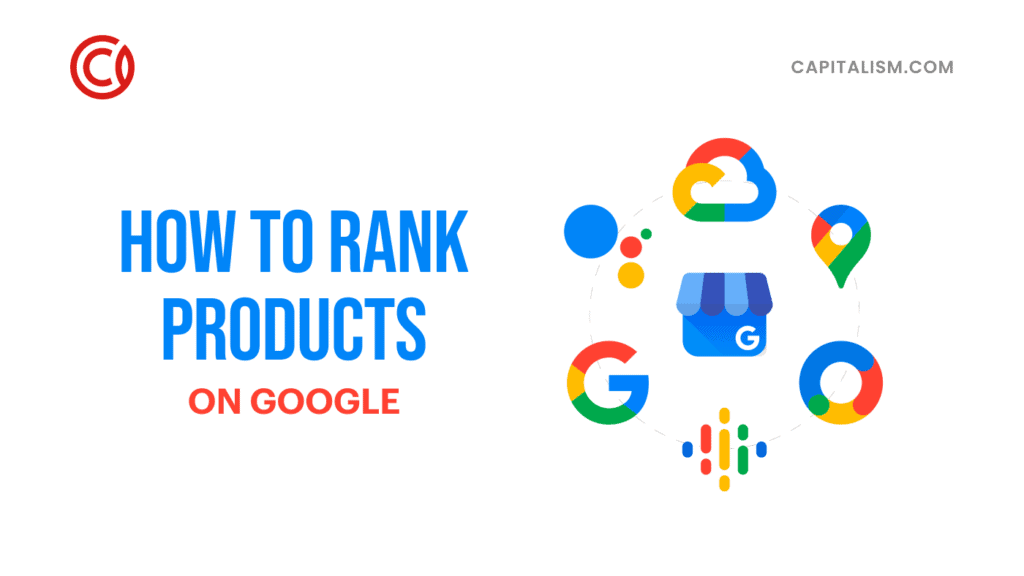You didn’t hit your sales goal this month. Your employees don’t respect you. Your competition is leaving you in the dust.
You feel like your business dreams are just that: a dream.
How do you improve your business? How do you inspire your team? How do you be a role model for entrepreneurs everywhere?
If you’re struggling, you might need to add one more skill to your arsenal: leadership.
But stepping up? Being accountable for your setbacks? Motivating your team when you don’t have a charismatic bone in your body? That’s scary.
Just know this: Leaders are made, not born.
Even the most introverted wallflower can learn how to be a great business leader. Here’s how you can do it.

Study the Best: What Traits do the Greatest Business Leaders Share?
If you don’t know where to start, start with the best.
What are the qualities of a good business leader? Which successful business traits do the greatest business leaders, like Oprah Winfrey and Steve Jobs, share? What are some business leadership examples to follow?
Perseverance.
Oprah Winfrey suffered many setbacks: born into poverty, suffered abuse, lost her child at 14, and fired as a news anchor. Oprah Winfrey could have succumbed to these difficulties. Instead, she persevered and built a multi-billion dollar empire.
Thick Skin.
Imagine having your book idea rejected by 12 different publishers. Repeated rejection and criticism could have broken J.K. Rowling’s spirit but it didn’t. She had thick skin and kept trying. Now, Harry Potter is a multi-billion dollar brand. Developing a thick skin against criticism is one of the best leadership skills you can develop.
Decisiveness.
Leaders who fail to act get left behind. Daniel Zhang, CEO of Alibaba Group said, “You can always course-correct if things don’t work out. The real fear is in the state of paralysis that results when you can’t make a decision at all.” Consult with experts if you need to but never fail to act.
Creativity.
Fortune rewards those who are creative. Henry Ford, one of many famous business leaders in history, wanted to make automobiles more affordable. He knew the answer was to cut down production costs. Henry Ford achieved this by being the first to use an assembly line to quickly assemble vehicles.
Accountability.
Kristen Hadeed, CEO of local cleaning service Student Maid, shares a story about how 75% of her team quit at the same moment. Hadeed realized the problem: she was a bad leader. She took ownership of her failure and installed systems to improve employee satisfaction, like proper training courses.
The Smackdown: Managers vs. Leaders
You see many arguments making managers look bad and leaders look good. But here’s the reality: you need to develop your leadership AND management skills.
Ever heard of Iron Man? Iron Man is the face behind Stark Industries. He’s the visionary leader in technology and crime-fighting. But you also have his romantic interest, Pepper. Pepper is CEO of Stark Industries and runs the day-to-day operations.
To be a great business leader, you need to be both Tony Stark and Pepper.
As the manager of a business, you:
- Run the daily operations
- Establish quantifiable goals
- Hire top talent
- Enforce policy
- Evaluate employee performance
As a business leader, you:
- Create the vision and brand
- Build trust and relationships
- Coach people and foster talent
- Guide decision-making
- Motivate and inspire people
Don’t mistake management and leadership as exclusive of each other. Being a great business leader means embodying both the qualities of a good manager and leader.
Be the Visionary
“A leader has the vision and conviction that a dream can be achieved. He inspires the power and energy to get it done.” ~Ralph Lauren
To be a leader, you need followers. To gain followers, you need vision.
Ingvar Kamprad’s vision was to offer home furnishing products at a lower price point without sacrificing creativity and quality. Despite having humble roots in a small farming village in Sweden, he founded IKEA. IKEA is now a global brand for home furnishing and appliances.
Steve Job’s mission statement was “to make a contribution to the world by making tools for the mind that advance humankind.” Under Apple, he launched innovative products that made Apple a household name and secured a fiercely loyal following.
How do you become a visionary leader?
- Be an expert in your industry. If you want to be a business leader, you need to know the market you’re operating in. Is your industry declining? Thriving? How can you be different? Asking these questions will shape your vision as a business leader.
- Be different. People always say the market is too competitive. But people who will buy your product or service if you present it differently. Your secret weapon to standing out is branding. How can you use branding to tell a different story?
- Be concise. Don’t let wordy mission statements confuse your consumer. Google’s mission statement is “to organize the world’s information and make it universally accessible and useful.” The TED Talks mission statement is to “Spread Ideas.” Great branding requires conciseness.
- Build relationships. Few can make it on their own. Rely on people to make your vision a reality. Collaborate with influencers or hire a consultant. If you sell on Amazon, work with Amazon experts to boost your sales.
A Great Captain Has a Great Ship
If you were a ship captain forming a ship crew, what do you need to offer? A secure ship and a comfortable wage.
That goes the same for your business. People love working for successful businesses. If you want to attract great employees, you need to ask: what are the qualities of a successful business?
Optimize your business model with these 5 questions:
- Do you have a unique brand? In a competitive market where everybody is selling a similar product or service, why should people pick you? Use branding to distinguish yourself from the competition. Tell a different story that makes your customer feel like a hero when interacting with your brand.
- Do you have a website? To succeed in this digital era, you need a website. Buy your domain name and choose a clean design that showcases your brand. Make your website easy to navigate and most importantly: make your website mobile-friendly.
- Are you capturing your prospects’ information? Part of optimizing your website is including a way to capture a prospect’s name and email address. Send emails full of helpful content over time to convert that prospect into a buyer.
- Do you have a sales funnel? So your email list is growing. Now what? Start sending emails to your customers to “warm them up” and when the time is right, drive traffic to your amazing sales funnel to close the sale.
- Are you building authority? You see more blog sections on company websites because it establishes authority. Use email campaigns, helpful articles, and white pages to show your customers (and peers) that you know what you’re talking about.

What Does Great Leadership and Relationships Have in Common?
Communication.
Without great communication, relationships fail. Without great communication, businesses collapse.
But did you know that there are three types of communication?
- Aggressive
- Passive
- Assertive
To illustrate each type of communication, let’s use a hypothetical scenario:
You see that two of your employees, Karen and Susan, are hostile towards each other. It’s creating an uncomfortable workplace for the people around them. You call Karen into your office to learn more about the issue.
Aggressive Communication.
Aggressive communication is often characterized by raised volumes, intimidation, and defensiveness. An aggressive communicator would tell Karen:
"Susan says you're being extremely rude. You need to understand that you’re wrong to act that way and you better shape up or you're fired."
Aggressive communication tramples on other people’s feelings and creates an “I’m right, you’re wrong” dynamic. If you believe you’re an aggressive communicator, ask more questions, and be more sensitive.
Passive Communication.
Passive communication is rooted in indifference and avoidance. Non-confrontational people use this communication style to “sweep things under the rug.” A passive communicator would tell Karen:
"Karen, I know that there have been some hiccups in the workplace but let's do our best to build a bridge and move forward."
Passive communication is ineffective because it doesn’t tackle the core issue. People don’t feel heard and miscommunication leads to misunderstandings and resentment. If you’re a passive communicator, always ask: did this solution actually solve the problem?
Assertive Communication.
Assertive communication style hits the sweet spot because it focuses on problem-solving without being overly aggressive. Assertive communication is effective communication. The assertive communicator might say:
"You have every right to feel that way about Susie. At the same time, I want to make the workplace a comfortable environment for everybody. We all work for the same company, working to achieve the same goals. Let's schedule a meeting with all three of us to see what we can do to improve your working relationship."
To be a great business leader, use assertive communication to convey your business needs and to problem-solve.
Give The People What They Want
Assertive communication is essential but effective communication also requires listening. Learning how to be a great business leader also means learning how to listen.
Qualities of a good business person means providing products or services that solve problems. Problem-solving requires listening to your customers’ desires and pain points.
That’s how Stephanie McMahon expanded the WWE’s brand. Stephanie McMahon over-delivers on amazing content because she listens to her consumers. The WWE has over 60 data scientists sifting through customer feedback surveys and suggestions to give the people what they want.
So what can you do? Start by sending a customer feedback survey to your email list.
4 Tips for Emailing Customer Feedback Surveys
- Be clear and concise. Skip any fancy layouts that will distract your customers. You’re asking your already busy consumers to offer you feedback. Get straight to the point.
- Be personal. When you capture a prospect’s information, remember to request their first name. There’s nothing more artificial than reading an email starting with “Dear Valued Customer.”
- Include a call to action. Reduce any friction between requesting your customer to offer feedback and them actually offering feedback. In your email, consider using a big, colorful button that says “TAKE SURVEY.”
- Offer an incentive. Time is valuable and people want to ensure their time is well-spent. You can offer a reward for completing a feedback survey, like being entered into a raffle for a free item or a discount code for their next purchase.
Stop telling people what they need. Instead, start giving them what they ask for.

Constructive Feedback: How to Give and Take
Learning how to dish out criticism and receive criticism is part of being an excellent leader. But how do you give constructive feedback without being overbearing and also receive feedback with grace?
Giving Feedback
Be specific.
Don’t base your feedback on judgments. Give specific examples.
Don’t say: You’re not working well with your co-workers.
Do say: I noticed yesterday that when Lauren asked you a question, you brushed her off and told her to ask somebody else.
Make it a two-way conversation.
Use this conversation about feedback as an opportunity for your employee to share their side of the story. You may realize that there is a bigger issue that needs to be addressed. For example, if they’re late on deadlines because meetings run too long, you can work on making meetings more productive.
Don’t wait.
Many leaders make the mistake of waiting until a fixed date, like a quarterly performance review, to share employee feedback. If you notice declining employee performance, immediately document specific examples and schedule a meeting with that employee.
Use positive reinforcement.
After meeting with an employee, recognize incremental improvements. Employees want to feel valued and want their efforts recognized.
Receiving Feedback
How can you evaluate your own performance if you don’t receive feedback? Flip the coin and have your employees offer you feedback.
Ask Questions
It isn’t enough to just ask for feedback. Ask specific questions like:
- Do you feel that I set clear expectations for your role?
- Do you think our meetings are productive and helpful or is it more a hindrance to your work?
- What would you do differently from me if you were the leader on this project?
Be approachable
Defensiveness scares people away. Your staff should feel comfortable when asking you for help or offering a suggestion. Great leaders promote a growth mindset. Everybody, including yourself, can improve.
Stay objective
Flashback to your previous jobs. Have you ever received feedback from your supervisor? Or how about a professor on a school project? We can take criticism personally but don’t let your personal feelings cloud the soundness of any feedback received.
Own it and Apply It.
Words are nothing until acted upon. If feedback is genuinely helpful, then apply it. Be a visible example for your employees that you can gracefully accept criticism but also be devoted to self-improvement.
Learn How to Be a Great Business Leader with Systems
In his book Work the System: The Simple Mechanics of Making More and Working Less, Sam Carpenter recalls how the first 15 years of his business was pure struggle. He was the owner of Centratel, a national telephone answering service. But this was a declining industry. He worked over 70-hour work-weeks. Problems were popping up constantly. It was like playing Whack-a-Mole with his business.
Sam Carpenter turned everything around when he started focusing on systems. He learned that time, health, and prosperity arrive only after your systems have been optimized.
What are some systems in your business?
- Customer service
- Accounting
- Hiring
- Marketing
Those systems can be broken down further. Customer service can be broken down into:
- Resolving customer complaints
- How to handle upset customers
- Asking for feedback
- Creating training programs and materials
When you see all your systems dismantled, start optimizing them.
Sam Carpenter’s 3-Step Process to Optimize Your Business Systems
- Documentation. Document every step for every procedure in your business. You want every system and procedure within your business to be crystal clear. Confusion and ambiguity is the enemy.
- Dissect your systems into individual cogs and optimize each one. This means eliminating unnecessary steps. Perhaps eliminating a system altogether and replacing it with a new one.
- Ongoing maintenance. Sometimes systems run into disrepair or become obsolete. Make sure that you revisit each of your systems regularly to ensure your business is running seamlessly.

Give Content Away FOR FREE
What? Doesn’t free mean lost profits?
Profit isn’t everything.
Pat Flynn from Smart Passive Income gives away TONS of free content on his blog and podcast. Gary Vaynerchuk gives tips and tricks to entrepreneurs all the time on his Instagram page. They’re building brand awareness.
Pat Flynn and Gary Vaynerchuk offer free content because they understand that content marketing can:
Establish brand authority
People flock to brands that offer helpful and relevant content. In Master Content Marketing, Pamela Wilson says:
"High-quality content works, too. It gets read and acted on. It gets passed around and bookmarked. It gets reader comments and people actually remember it." ~Pamela Wilson
People engage with your brand because they resonate with your content. Content marketing positions you as an authority in your industry, which encourages people to buy your product or service over everybody else.
Build your email list
Capturing somebody’s email address is getting more challenging. You can no longer just ask people to join your email list. Consumers need to want to.
But sometimes a super helpful article isn’t enough to collect an email address.
But what if you offer an incentive: more free content. Maybe you offer a comprehensive guide to solve a problem, or a list of tools to get something done. All for free, but only if they join your email list.
It’s true what they say: you need to give to receive.
Get you found on Google
If you optimize your articles for search engine optimization (SEO), your increase your chances of ranking on the first page of Google.
There’s a saying: if a tree falls in a forest and nobody’s around, does it make a noise? Well, if you have a business and it’s nowhere to be found, does it really exist?
Optimizing your comprehensive content for SEO will position your article for the first page on Google. That means increased brand presence, increased traffic, and increased sales.
Minimum Wage = Minimum Work Quality.
Yes, feeling valued is important. Yes, believing in the work you do is important. And yes, having a friendly work culture is important.
But when we get down to it, why do employees show up to work? To get paid.
It’s not as altruistic but it’s the darn truth. So what do great business leaders do? They pay a generous wage to attract high-performing employees.
Employees want to do good work. Employees want to offer value to the company. But mostly, employees want their compensation to reflect their efforts.
Think about this. How can you have high-performing employees when they’re anxious about paying their bills on time? When they can’t afford nutritious food? Or a gym membership?
And this can be controversial because you can’t control how people budget their money. But what a great business leader can control is that their employees are well taken care of by paying them a comfortable wage.
Take Action
Being a leader means assuming full responsibility over your business. Even with these helpful leadership tips, that’s still a terrifying reality.
But that also means that you have full responsibility over your business succeeding.
Still, learning about how to be a great leader isn’t enough. If you want to build a business empire. If you want to create a million dollar brand. And if you want to be that beacon of inspiration for entrepreneurs, you need to act.
It isn’t enough to just know business leadership qualities. Overcome your analysis paralysis and your fear and start doing. Ruth Soukup from the Do It Scared podcast says:
“Action is the antidote to fear.”
Being a leader means venturing into new territory and expanding your skills. And if you still doubt your leadership abilities, just remember: Leaders are made, not born. It’s an ongoing journey.
So move forward, knowing that you will make mistakes. Probably many. But know that under your leadership, those mistakes will grow your business to amazing heights.













